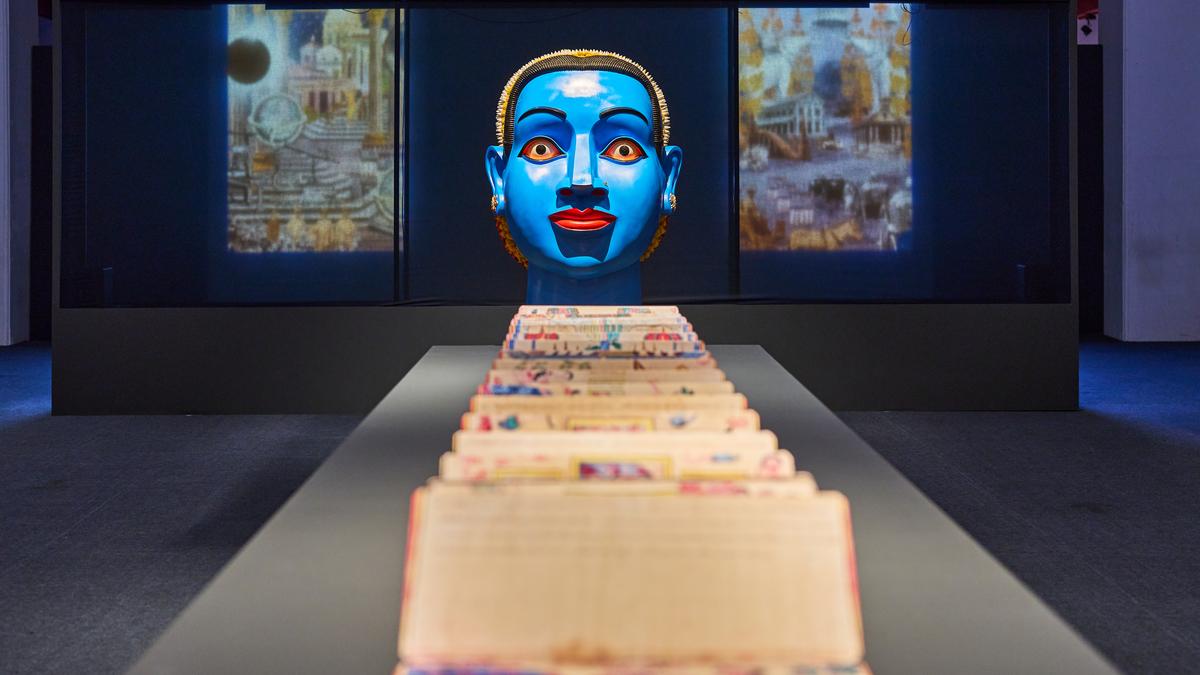
Bangkok Art Biennale 2024 | Anish Kapoor at the mall
The Hindu
Spread across 11 venues that include busy shopping centres and temples, the fourth edition of Bangkok Art Biennale is getting a lot of things right this year
A large coral-coloured resin horn, Good Like Gaia by Italian artist Lello Esposito, curves to the sky in the gardens at the Wat Prayoon temple complex. Eyeballs pop up at the most unexpected places across Bangkok: British artist Bruce Asbestos’s wobbly, green Eye of Newt at Museum Siam, inspired by frogspawn and the idea of change, and the late French-American artist Louise Bourgeois’ carved granite Eyes, signifying introspection, at Wat Pho.
And 10 minutes away, at Siwamokkhaphiman Hall, part of the Grand Palace complex, a 19th-century clock — a gift to the monks from Thai king Rama V — takes on significance juxtaposed with a video installation about the king’s Europe tour in 1897. The four-minute piece by Thai artists Nakrob Moonmanas and Chitti Kasemkitvatana delves into concepts of time, and how it changed from the Buddhist non-linear format to the more western one defined by productivity.
These seemingly distinct installations cohesively come together when viewed through the lens of Bangkok Art Biennale’s 2024 theme, ‘Nurture Gaia’ — embracing themes of hybridity, contemplative ecology, femininity, disappearing knowledge, and the supernatural.
Curated by Apinan Poshyananda, artistic director of the biennale since its inception in 2018, and a team of curators, the fourth edition features 76 artists from 39 countries, and exhibits across 11 venues in the city. “The theme reflects an urgent call to address the Anthropocene impact while also offering hope. Through art, we explore the duality of crisis and care, showcasing works that advocate for environmental awareness, activism, and healing,” says Poshyananda. Among the big Indian names are Anish Kapoor, with his iconic S-Curve, Ravinder Reddy, George K., and Chitra Ganesh.
In contrast to the Venice Biennale, with its formal pavilions and art cognoscenti flying down to visit, biennales hosted in the heart of a city, especially a tourist hub, are quite different. At the Kochi-Muziris Biennale in India, you spot families and tourists wandering the bylanes of Fort Kochi, slipping into old warehouses and walking up wooden staircases in historic cafes to interact with the art. There is a similar, familiar air in Bangkok, where parents with children in tow, tourists, and art lovers dog each other’s footsteps as they follow the river and city routes. Spread across temples, museums, galleries and convention centres, the art merges seamlessly with daily life.
Reddy’s Parvati draws large crowds at the Bangkok Art and Culture Centre, as does Anish Kapoor’s gleaming S-Curve displayed at the new lifestyle hub, One Bangkok. At the National Gallery, I meet George K., a retired banker and self-taught artist whose Aravani series of sculptures and paintings of transgender women from Tamil Nadu explores inclusivity and gender fluidity. The life-sized hyperrealist fibreglass sculptures are eye-catching with their bright costumes, and inscribed words in English, Tamil and Hindi. “Thai and Indian aesthetics overlap in many ways, so I can see how people relate to my work,” says George. “The concept is also timely because Thailand will legalise same-sex marriage in January 2025. I am in the right place at the right time.”
Elsewhere at the gallery, Ganesh, a visual artist from New York, uses images from billboards, product labels, advertisements and comics in The Thick of Time to ‘speak to contemporary realities of conflict, power, and desire’.













